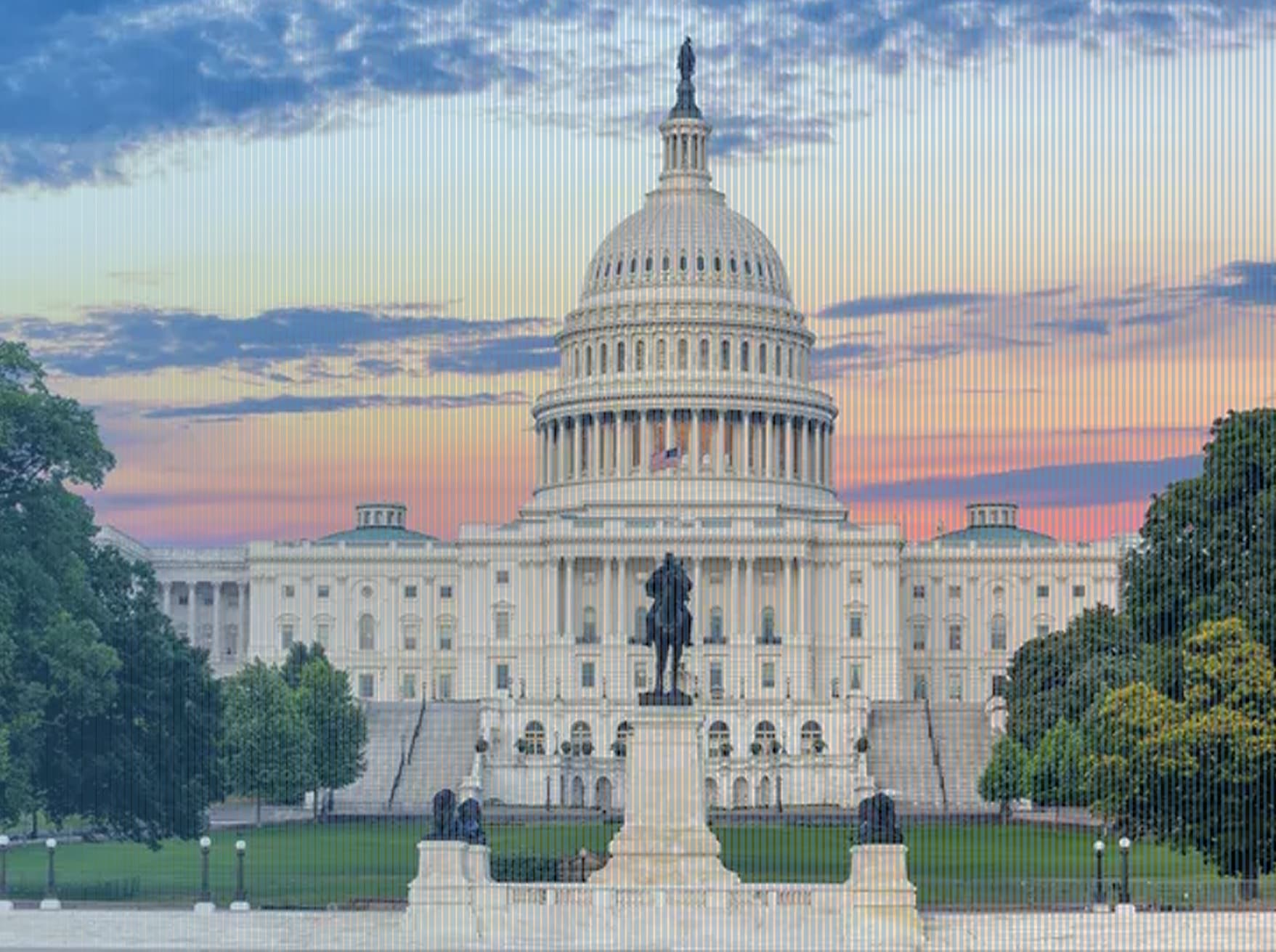The federal government shut down at midnight October 1. Despite the shutdown, Social Security checks will still go out on time. Doctors and hospitals will still be paid for Medicare services. States will still receive Medicaid funding. And civilian and military retirees will still collect their pensions.
Some shutdown.
The plot
The truth is that the shutdown affects only a small—and shrinking—piece of the budget: the green line in today’s plot.1
The chart divides federal spending into two categories: discretionary and mandatory.
Discretionary spending (the green line) funds most federal departments and agencies. Roughly half goes to defense, while the other half—called non-defense discretionary—funds agencies such as the Justice Department, Homeland Security, and the State Department. Congress must annually appropriate money for each of these agencies, otherwise they “shut down.”2
Mandatory spending (the blue line) funds the nation’s entitlement programs. Think Social Security, Medicare, Medicaid, federal pensions, and a host of smaller programs. In contrast to discretionary spending, mandatory programs are generally on autopilot. Spending for these programs is permanently authorized or authorized for a multiyear period.
Over the past thirty years, discretionary spending rose by $1,500 per person in inflation-adjusted 2025 dollars. It is projected to climb an additional $1,400 over the next three decades. Mandatory spending, meanwhile, grew by $6,800 per person since 1995 and will grow by $8,400 over the next thirty years.
It wasn’t always this way. In 1962, 72 percent of noninterest spending went to discretionary programs. Today, that number is 31 percent. It will fall to 25 percent by 2055.
The points
Discretionary spending may represent a shrinking share of the budget, but it should not be ignored. In 2025, it topped $1.8 trillion. And today’s projections are overly optimistic. History shows that discretionary spending spikes during recessions, geopolitical crises, and natural disasters—none of which are built into the forecasts. Future Congresses will face the same pressures to push discretionary spending higher. Keeping discretionary spending under control will be essential to meeting the nation’s budget challenges.
But while there is room to streamline discretionary spending, today’s chart highlights the real source of our budget challenges: mandatory spending. Even this year’s shutdown fight underscores how mandatory spending dominates the federal budget. In mid-September, House Republicans passed a nine-week continuing resolution (CR) that would have averted the shutdown. Senate Democrats blocked that bill—not over the CR itself, but over whether to extend COVID-era enhanced Affordable Care Act subsidies. In the end, a dispute over mandatory spending forced a shutdown of discretionary programs.3
Learn more
The federal budget’s challenges are no secret. The solutions are not as obvious. The Hoover Institution’s Fiscal Policy Initiative explores reforms to both discretionary and mandatory spending that would restore the nation’s fiscal sustainability.
One more plot
The astute reader may have noticed an important omission in today’s plot: interest spending. For those readers, here is a chart that adds interest and splits discretionary spending into defense spending and non-defense discretionary spending. Until recently, historically low interest rates have kept interest spending in check, even as federal debt rose. That is no longer true. Interest spending has surpassed defense spending. It is projected to surpass all discretionary spending by 2041.
Historical budget data are from the Office of Management and Budget’s Historical Tables (Tables 8.1 and 10.1). Budget projections and economic data are from the Congressional Budget Office’s January 2025 The Long-Term Budget Outlook: 2025 to 2055. We adjust CBO’s projections to account for changes due to the One Big, Beautiful Bill Act (OBBBA) using CBO’s July 21, 2025 cost estimate. We use the GDP price index (as reported by CBO) to adjust for inflation.
We say “shut down” but the government still maintains “essential services” like the military and law enforcement activities, so we don’t recommend trying to commit a federal crime during a shutdown.
In case you are wondering, extending the enhanced ACA subsidies would increase entitlement spending by $68 per person in 2026. This will rise to $83 in 2035. The subsidies will also reduce revenue, further increasing federal deficits.
Tom Church is a policy fellow at the Hoover Institution. He studies health care policy, entitlement reform, income inequality, poverty, and the federal budget. He is co-author of “Choices for All,” a set of commonsense health care reforms.
Daniel Heil is a policy fellow at the Hoover Institution. He studies the federal budget, tax policy, and federal antipoverty programs. During the 2016 presidential campaign, he served as economic policy adviser to former Florida governor Jeb Bush.
